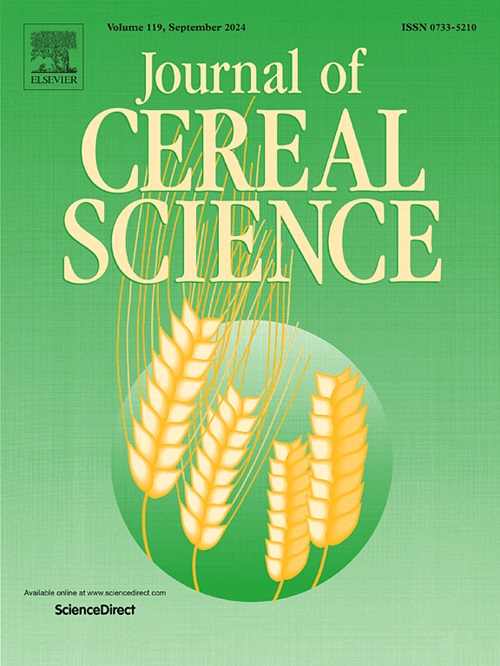Comparative effects of nanocellulose and inulin on the quality of frozen bread dough processed by different freezing methods
IF 3.7
2区 农林科学
Q2 FOOD SCIENCE & TECHNOLOGY
引用次数: 0
Abstract
This study investigates the effects of nanocellulose and inulin as novel and natural cryoprotectants in maintaining the technological properties and structural integrity of frozen bread dough under three different freezing techniques: Static, air-blast, and individual quick freezing (IQF). Nanocellulose derived from pistachio hull and inulin extracted from Jerusalem artichoke, produced using deep eutectic and hydro-based solvents respectively, were incorporated into the dough formulation and compared both with each other and against a negative control group lacking cryoprotectant. Key quality indicators such as total dry matter, water activity, color difference, drip loss, ion leakage, α-amylase activity, and bread texture were evaluated over a 6-month frozen storage period. The results revealed that both cryoprotectants significantly improved dough and bread quality, with inulin being particularly effective in maintaining enzymatic activity and specific volume by reducing freezing-induced damage, while nanocellulose provided better protection against drip loss and ion leakage by minimizing moisture migration. Among freezing methods, IQF consistently preserved dough integrity better than static or air-blast freezing, highlighting the synergistic benefits of combining appropriate cryoprotectants with rapid freezing methods. These findings suggest that incorporating nanocellulose and inulin in frozen dough formulations can be a promising strategy for enhancing shelf life, structural stability, and final product quality in the frozen bakery industry.
纳米纤维素和菊粉对不同冷冻方式冷冻面包面团品质的影响
本研究研究了纳米纤维素和菊粉作为新型的天然冷冻保护剂,在三种不同的冷冻技术:静态冷冻、风冷冷冻和单独快速冷冻(IQF)下,对冷冻面包面团的工艺性能和结构完整性的影响。将从开心果壳中提取的纳米纤维素和从菊芋中提取的菊粉分别用深共晶溶剂和水基溶剂制备,加入面团配方中,并与两者进行比较,并与缺乏冷冻保护剂的阴性对照组进行比较。在6个月的冷冻储藏期内,对面包的总干物质、水分活度、色差、滴漏损失、离子泄漏、α-淀粉酶活性和质地等关键品质指标进行了评价。结果表明,这两种冷冻保护剂都能显著改善面团和面包的质量,其中菊粉通过减少冷冻引起的损伤,在维持酶活性和比体积方面特别有效,而纳米纤维素通过减少水分迁移,对滴漏损失和离子泄漏提供了更好的保护。在冷冻方法中,快速冷冻比静态冷冻或鼓风冷冻更能保持面团的完整性,这突出了将适当的冷冻保护剂与快速冷冻方法相结合的协同效益。这些发现表明,在冷冻面团配方中加入纳米纤维素和菊粉可能是一种有前途的策略,可以提高冷冻烘焙行业的保质期、结构稳定性和最终产品质量。
本文章由计算机程序翻译,如有差异,请以英文原文为准。
求助全文
约1分钟内获得全文
求助全文
来源期刊

Journal of Cereal Science
工程技术-食品科技
CiteScore
7.80
自引率
2.60%
发文量
163
审稿时长
38 days
期刊介绍:
The Journal of Cereal Science was established in 1983 to provide an International forum for the publication of original research papers of high standing covering all aspects of cereal science related to the functional and nutritional quality of cereal grains (true cereals - members of the Poaceae family and starchy pseudocereals - members of the Amaranthaceae, Chenopodiaceae and Polygonaceae families) and their products, in relation to the cereals used. The journal also publishes concise and critical review articles appraising the status and future directions of specific areas of cereal science and short communications that present news of important advances in research. The journal aims at topicality and at providing comprehensive coverage of progress in the field.
 求助内容:
求助内容: 应助结果提醒方式:
应助结果提醒方式:


